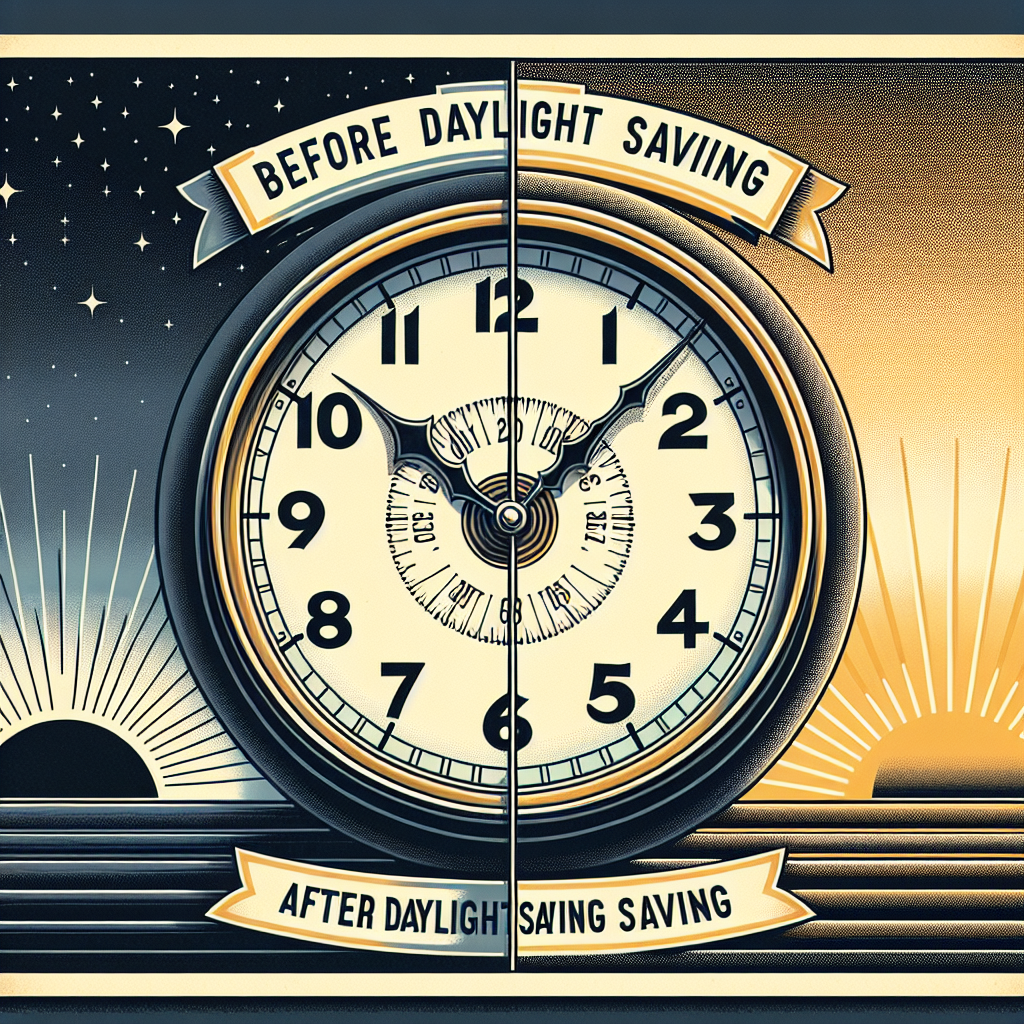Daylight Saving
Exploring new travel destinations around the globe is an exhilarating experience for an adventure seeker like yourself. Daylight Saving becomes an essential aspect of these trips that you might not have considered earlier. Whether it’s subtly adjusting the mood of a scenic sunrise in Paris or having an extra hour of sunlight in New York to hit the must-see sites, it plays a profound role. This article unfolds the intriguing aspect of Daylight Saving, its relevance, and the significant impact it can have on your globetrotting adventures. Buckle up, you’re about to see travel in a whole new light – quite literally.

History of Daylight Saving Time
Let’s take a look at the past and delve into the history of Daylight Saving Time.
Beginnings of Daylight Saving Time
Daylight Saving Time (DST) may seem like a modern concept, but in reality, your parents, grandparents, and even great-grandparents were likely setting their clocks forward every spring and back every fall. The practice first started in Germany during World War I as a way to conserve fuel by reducing the need for artificial lighting.
Global Adoption of Daylight Saving
This energy-saving tactic quickly spread to various other countries including the United States and the UK. Fast-forward to today, and you’ll find that over 70 countries around the world observe Daylight Saving Time, albeit sometimes under a different name.
Variations in Historical Implementation
The dates and methods of implementing DST have varied quite a bit throughout its long history. Some countries only began using it in the 20th century, while others have implemented and then abandoned DST multiple times.
Concept and Purpose of Daylight Saving Time
So, why exactly do we go through the biannual ritual of changing our clocks?
Energy Conservation
The primary idea behind Daylight Saving Time is to prolong daylight in the evenings, reducing the need for artificial lighting and promoting energy conservation. By moving the clocks forward, we can take full advantage of the naturally occurring daylight.
Economic Considerations
There’s an economic angle to DST as well. Longer daylight hours encourage people to stay outside longer – dining, shopping, or participating in leisure activities. This leads to greater spending and thus stimulates the economy.
Extended Leisure Time
DST also creates more leisure time. With more daylight at the end of the day, we have more opportunities to enjoy outdoor activities and hobbies after work.
Implementation of Daylight Saving Time
Method of Shifting the Clock
The actual process of shifting the clock for DST seems quite simple: in the spring, set your clock forward by an hour, and in the fall, set it back. But it’s more than just a matter of twisting the hands on your clocks.
Regional Differences in Clock Changes
Different regions can have different DST dates. In the United States, for instance, it begins on the second Sunday of March and ends on the first Sunday of November, but in Europe, it begins on the last Sunday of March and ends on the last Sunday of October.
Synchronization of Time Zones
Despite the differences in when DST occurs, time zones across the globe stay synchronized. Whether the clocks are “springing forward” or “falling back,” the relative time differences between different areas remain the same.
Controversies Surrounding Daylight Saving Time
Despite its long-standing practice, DST has its share of detractors and controversies.
Health Impact
Firstly, critics argue that DST can be bad for your health. The hour of sleep lost or gained during DST transitions can disrupt sleep patterns and circadian rhythms, leading to temporary sleep deprivation and increased stress.
Productivity and Safety Issues
The lack of sleep and disruption in routines can also impact productivity levels and increase safety risks. There’s evidence to suggest an increase in car accidents and workplace injuries in the days following the spring transition to DST.
Arguments Against Time Changes
Others argue that the energy savings are nominal at best and that modern society, with its 24/7 lifestyle, makes the shift irrelevant.

The Impact of Daylight Saving Time on Travel
You might not immediately think of DST when planning your travels, but it can definitely have an impact.
Changes in Flight Schedules
DST can cause changes to flight schedules. Airlines have to adjust their schedules to accommodate the hour change, especially for international flights crossing multiple time zones.
Effect on Tourist Attractions and Activities
If you’re on vacation in a country observing DST, it could mean more daylight hours to explore and enjoy outdoor tourist attractions. However, it might also alter the operating hours of some attractions.
Impact on International Travel
Timings of flights, trains, and even bus schedules may shift due to DST, so being aware of when and if a country observes DST can help you better plan your travel itinerary and avoid any unpleasant surprises.
Adjusting to Daylight Saving Time
While the clock adjustment for DST is only by an hour, it can throw your day off balance. Here are some tips to make the transition smoother.
Health Tips
Try to gradually adjust your sleep schedule a few days before the change. Go to bed and wake up 15 minutes later (for the spring shift) or earlier (for the fall shift) each day until you’ve adjusted to the new schedule.
Planning for the Shift
It’s also important to plan your day around the time change. Make note of any appointments or commitments that could be impacted by the shift in time.
Managing Technology During Time Changes
Many of our devices adjust the time automatically, but some may not. Be sure to double-check all of your devices to ensure they’ve made the shift correctly.

Daylight Saving Time Around the World
DST isn’t observed by all countries. Each region has its own reasons and rules regarding the time change.
Countries Without Daylight Saving Time
You’ll find plenty of places that do not observe DST. Most of Africa and Asia do not adjust their clocks, while popular tourist destinations like Hawaii and Arizona in the United States also opt out of DST.
Notable Differences in Daylight Saving Practices
Even among countries that do observe DST, there are variations. Some southern hemisphere countries observe DST during their summer months (which is winter for the northern hemisphere), and the start and end dates can vary significantly between countries.
Regional Politics of Daylight Saving Time
Regional politics can also play a role in DST practices. Some regions have even chosen to ignore national DST regulations, creating what some refer to as “time zone chaos.”
Understanding Time Zones and Daylight Saving
Daylight saving time and time zones are interconnected, but it can be complex.
How Time Zones Work
Time zones divide the world into 24 zones, each one representing an hour of the day. These zones ensure that no matter where you are in the world, 12 noon is roughly the middle of the daytime and 12 midnight is roughly the middle of the night.
The Role of Daylight Saving in Timekeeping
DST makes this a little more complicated, as it temporarily adjusts the time zone in regions that observe DST. This is why some areas have time changes throughout the year.
Complexities of International Timekeeping
When you throw in international date line crossings, DST and different time zones in the mix, matters can get pretty complicated. It’s not just about mentally adding or subtracting an hour – global timekeeping can quickly become fairly convoluted.

The Role of Government in Daylight Saving Time
Governments play a key role in the establishment and enforcement of DST.
Legislation Surrounding Daylight Saving
Many countries, including the U.S, have laws that standardize the start and end dates of DST, as well as which regions are obligated to observe it.
Role of Government in Implementing and Updating Daylight Saving Practices
Government agencies are responsible for implementing and updating DST practices. They communicate changes, update official timekeeping systems, and ensure public utilities like transportation and broadcasting adjust their schedules accordingly.
Public Reactions to Government Decisions About Daylight Saving
Public opinion on DST can influence government decisions about it. There has been a considerable pushback in regions where DST is less popular, leading to certain areas opting out of the practice altogether.
The Future of Daylight Saving Time
As we adapt to a world that’s increasingly digital and globally connected, the future of Daylight Saving Time is in question.
Movements to Abolish Daylight Saving Time
Many have petitioned to end the practice altogether. These endeavours argue for a single, standardized time throughout the year to reduce confusion and potential health and productivity impacts.
Potential Alternatives to Daylight Saving
There has been talk of potential alternatives to DST, such as creating more time zones to more closely align with the natural daylight cycle.
Implications for Global Timekeeping
Any changes to DST would have significant implications for global timekeeping. Adjustments would need to be made worldwide, including changes to international transportation schedules and digital systems.
That’s all for our comprehensive dive into the past, present, and potential future of Daylight Saving Time. Love it or hate it, it’s an intriguing practice that has far-reaching implications beyond just changing our clocks.


